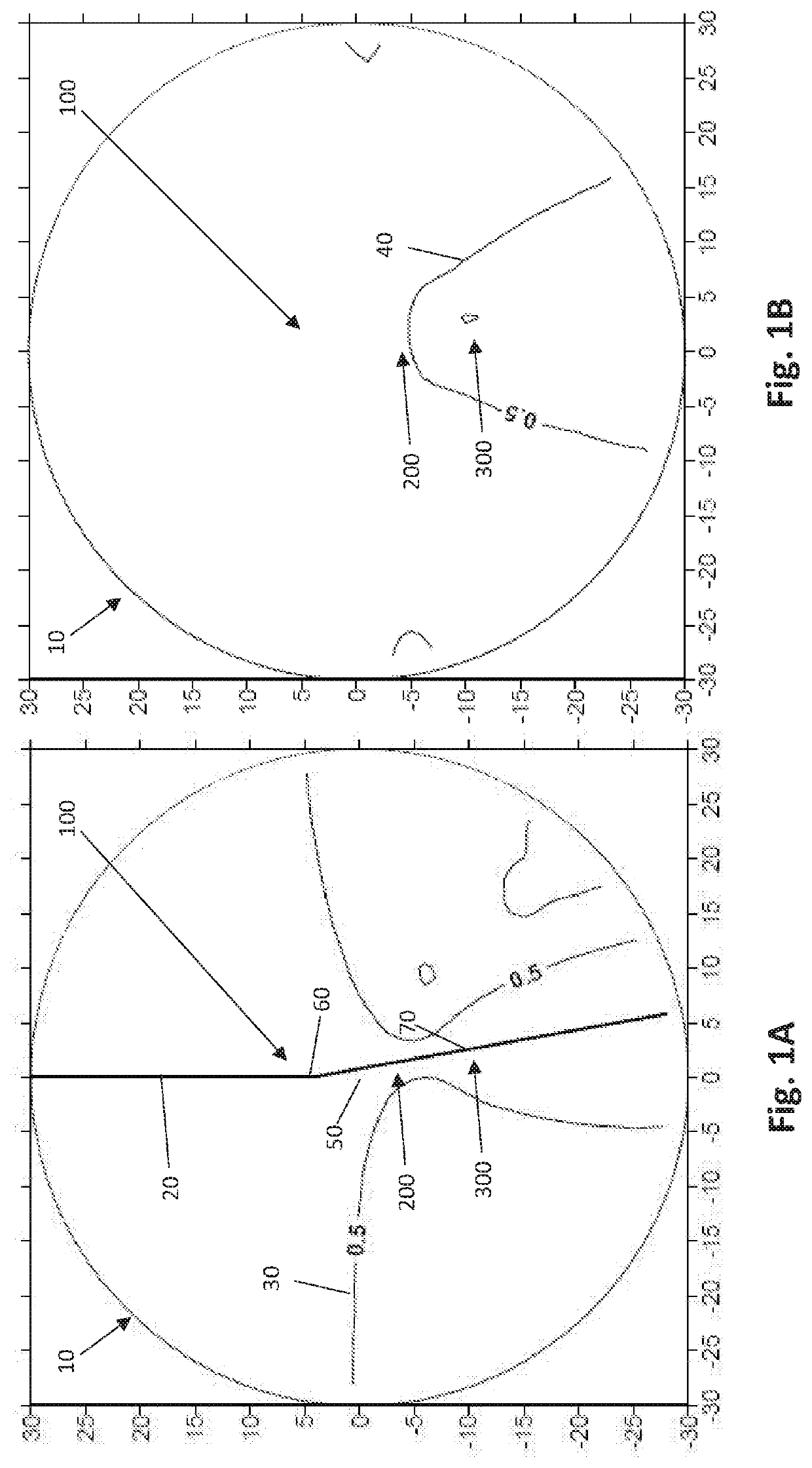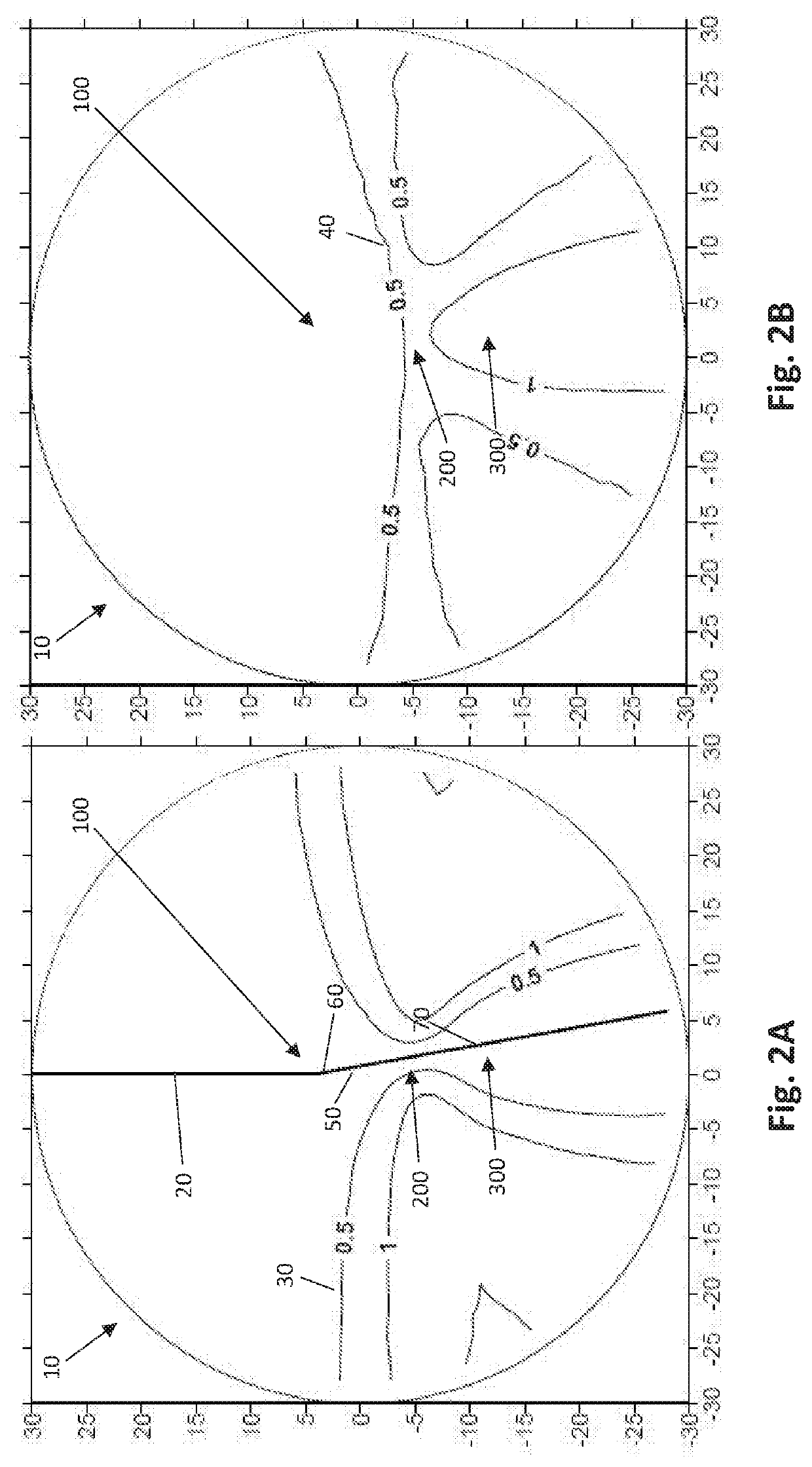Systems and methods for shortened corridor progressive lenses with superior distance vision area
a technology of progressive lenses and distance vision area, applied in the field of progressive lenses, can solve the problems of insufficient function of the near vision zone, and achieve the effect of enhancing the distance vision area
- Summary
- Abstract
- Description
- Claims
- Application Information
AI Technical Summary
Benefits of technology
Problems solved by technology
Method used
Image
Examples
Embodiment Construction
[0034]With reference to FIGS. 1A through 9B, depicted therein are various plots showing isocurves of various progressive lenses 10 according to several embodiments of the present invention, particularly progressive addition lenses 10 having maximum add powers ranging from 1.00 to 3.00. FIGS. 1A, 2A, 3A, 4A, 5A, 6A, 7A, 8A, and 9A are cylinder plots, with astigmatism isocurves 30 depicting the various levels of astigmatism throughout the lenses 10. FIGS. 1B, 2B, 3B, 4B, 5B, 6B, 7B, 8B, and 9B are mean power plots for the corresponding lenses 10, with magnification isocurves 40 depicting the various levels of magnification, or addition power, throughout the lens 10.
[0035]With continuing, general reference to FIGS. 1A through 9B, the various embodiments of the inventive lens 10 described and disclosed herein is a progressive lens 10 that, in at least one preferred embodiment, is intended to be fit on a wearer at 4 mm above the prism reference point (“PRP”) 50. With respect to the plots...
PUM
 Login to View More
Login to View More Abstract
Description
Claims
Application Information
 Login to View More
Login to View More - R&D
- Intellectual Property
- Life Sciences
- Materials
- Tech Scout
- Unparalleled Data Quality
- Higher Quality Content
- 60% Fewer Hallucinations
Browse by: Latest US Patents, China's latest patents, Technical Efficacy Thesaurus, Application Domain, Technology Topic, Popular Technical Reports.
© 2025 PatSnap. All rights reserved.Legal|Privacy policy|Modern Slavery Act Transparency Statement|Sitemap|About US| Contact US: help@patsnap.com



